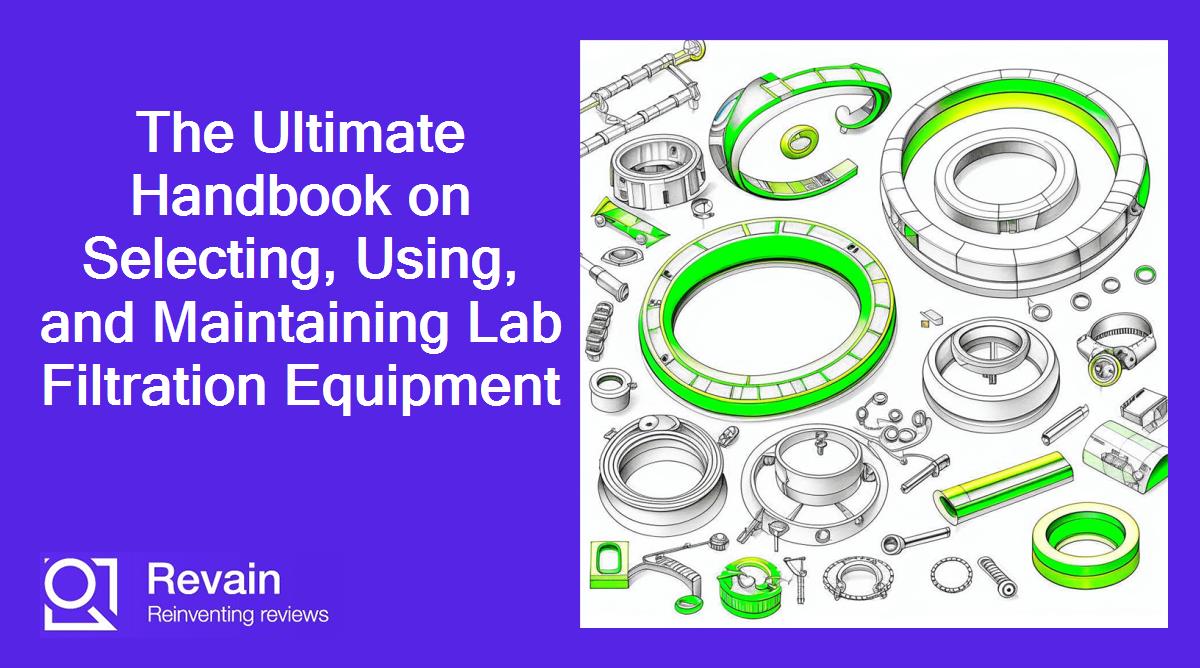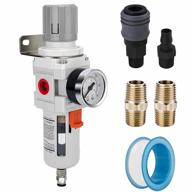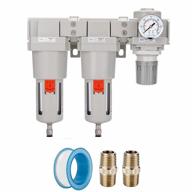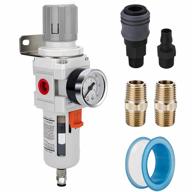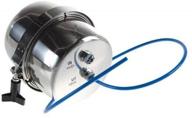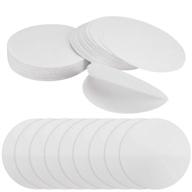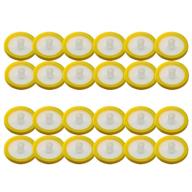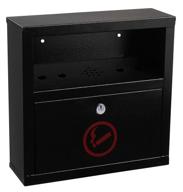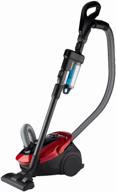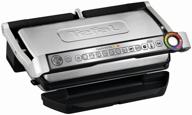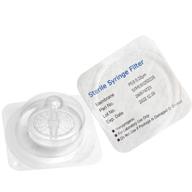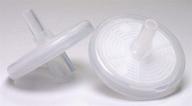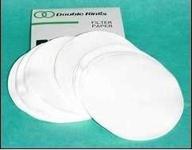The Essentials of Lab Filtration
Filtration is a critical component of many laboratory processes and procedures. The right filtration equipment helps ensure sample integrity, protect instruments, and produce reliable results. This article will provide an overview of essential lab filtration concepts to help scientists select and use the appropriate filters.
Another interesting products
Types of Lab Filters
There are several main categories of lab filters:
- Membrane filters - Made of cellulose nitrate or nylon with specific pore sizes to filter out particles.
- Depth filters - Thick filters that trap particles throughout their depth.
- Activated carbon filters - Removes chemicals, gases, and odors.
- HEPA and ULPA filters - Highly efficient at removing fine particles and microorganisms.
- Syringe filters - Inline filters for processing small sample volumes.
Top products in 🧪 Lab Filters
Filtration Mechanisms
Filters use different mechanisms to remove contaminants:
- Screening - Particles larger than the pore size are blocked.
- Adsorption - Contaminants adhere to the filter surface.
- Size exclusion - Particles smaller than the pores pass through while larger ones are trapped.
Similar products
Key Filtration Specifications
| Parameter | Definition |
|---|---|
| Pore size | The size of particles that can pass through filter pores. |
| Nominal rating | The approximate pore size that captures a given percentage of a test contaminant. |
| Efficiency | The percentage of test particles removed from influent fluid. |
| Capacity | The filter's ability to hold trapped contaminants per unit volume. |
| Flow rate | The volumetric flow per unit time through the filter. |
| Chemical compatibility | The filter's resistance to chemicals in the influent fluid. |
Applications of Lab Filtration
Typical uses of filtration in the lab include:
- Clarifying samples before analysis.
- Sterilizing media and reagents.
- Purifying solvents and chemicals.
- Protecting analytical instruments like HPLCs.
- Preparing and storing sterile water.
- Filtering cell cultures.
Selecting the Right Lab Filter
Consider the following when choosing a filter:
- Pore size - Small enough to remove target contaminants.
- Chemical compatibility with solutions being filtered.
- Sufficient flow rate and capacity for the application.
- Quality of construction and leak-proof seal.
- Cost, shelf life, and ease of use.
Discuss your application details with vendors to find the optimal filter.
Proper Use of Lab Filters
Follow these tips for best results when using lab filters:
- Pre-rinse filters with purified water before use.
- Do not exceed maximum temperatures, pressures or flow rates.
- Install inline filters with proper directional flow.
- Replace filters when capacity is reached.
- Sterilize and handle filters aseptically as needed.
- Follow safety protocols - wear gloves and goggles.
With an understanding of basic lab filtration principles and proper filter selection and use, scientists can achieve reliable and accurate results.
Types of Lab Filters and Their Uses
Lab filters come in many different types to suit a wide range of applications. Selecting the right filter ensures sample purity and protects analytical equipment. This article will overview common filter types and their typical uses in the lab.
Membrane Filters
Membrane filters contain pores of precise sizes to remove particles by surface screening. Popular options include:
- Cellulose nitrate - Low protein binding makes them ideal for microbiology. Pore sizes of 0.45 μm and 0.22 μm are common.
- Nylon - Withstands many organic solvents. Used for GC sample prep at 0.2 μm.
- PTFE - Chemically resistant with 0.1 μm pores for HPLC mobile phase filtration.
Depth Filters
These thicker filters trap particles throughout their depth. Types include:
- Glass fiber - Binds fine particles like silica in water at >1 μm rating.
- Diatomaceous earth - For filtering large volumes of liquids up to 100+ L.
- Cellulose - Economical option for sample clarification at 8-10 μm.
Adsorptive Filters
Adsorptive filters remove contaminants by trapping them on the filter surface. They include:
- Activated carbon - Adsorbs organic compounds, gases, and odors from air and liquids.
- Ion exchange - Exchanges undesirable ions for hydrogen or hydroxide ions.
- Zeolite - Traps water from solvents, gases, and chemicals.
HEPA and ULPA
HEPA (High Efficiency Particulate Air) and ULPA (Ultra Low Penetration Air) filters use microglass fibers to remove >99.97% of particles and microorganisms down to 0.12 μm for critical applications.
Syringe Filters
Inline syringe filters are commonly used to:
- Clarify small sample volumes like PCR products.
- Filter HPLC samples directly into vials.
- Sterilize media for transfer between containers.
Typical Lab Filtration Applications
| Application | Typical Filter Used |
|---|---|
| Sterilizing media and reagents | 0.22 μm cellulose nitrate |
| Clarifying serum or plasma | Glass fiber depth filter |
| Purifying solvents like hexane | PTFE membrane + activated carbon |
| Removing particles from water | 0.45 μm nylon membrane |
| Prepare GC samples | 0.2 μm PTFE syringe filter |
| Filtering air in cleanrooms | ULPA filter |
Discussing your specific filtration needs with vendors will help determine the optimal filter type and specifications like pore size, flow rate, and chemical compatibility.
Proper Use of Lab Filters
To achieve best results:
- Pre-rinse filters with purified water before use.
- Replace clogged filters to maintain flow.
- Ensure proper installation and directional flow.
- Follow safety protocols and never exceed limits.
- Sterilize and handle filters aseptically as required.
With good lab filtration practices, researchers can obtain contaminant-free samples, protect analytical equipment, and ensure accurate scientific results.
Key Considerations When Selecting a Lab Filter
Choosing the right lab filter for an application requires evaluating several key parameters. This ensures proper contaminant removal and optimal performance.
Intended Use
Consider how the filter will be used:
- Particle filtration
- Clarification
- Sterilization
- Chemical/gas removal
- Analytical sample prep
This helps narrow suitable filter types and specifications.
Pore Size
The pore size or particle retention rating must be small enough to trap target contaminants. Typical values are:
- 0.1 μm - 0.45 μm for microorganism removal
- 1 μm - 10 μm for particle clarification
- 0.01 μm - 0.1 μm for analytical applications
Materials of Construction
Filter media must be compatible with solutions being filtered. Options include:
- Cellulose nitrate or nylon for aqueous solutions
- PTFE for organic solvents
- Glass fibers for acids/bases
- Silver membrane for chlorine removal
Chemical Compatibility
Verify the filter withstands any chemicals in the sample. Check compatibility charts from the vendor.
Operating Limits
Filter pressure, temperature, and flow rate limits must suit the application. Confirm limits will not be exceeded.
Extractables
Filters can leach trace organic compounds into the sample. Request extractables testing data.
Sterilization Method
If needed, the filter must be compatible with sterilization by:
- Autoclaving
- Irradiation
- Chemical treatment
Quality and Integrity
Select quality filters with validated microbial retention and comprehensive quality control testing.
Housing Design
Housings should have:
- Leak-proof seals
- Inlet and outlet ports that align with process flow
- Materials suited for use environment
- Ergonomic shape for handling
Cost Considerations
Compare filter cost versus:
- Useful life
- Sample volumes needed
- Maintenance requirements
Getting the right filter improves results and reduces overall costs.
Vendor Selection
Choose an established vendor with excellent product knowledge and customer service. They can help select the optimal filter for each application need.
With careful consideration of these key factors, laboratories can achieve their filtration objectives reliably and efficiently.
Recommended Lab Filters for Common Applications
Selecting the right lab filter ensures proper contaminant removal for the intended use. Here are recommended filters for some typical laboratory applications.
Sterilizing Liquids and Gases
Cellulose nitrate membrane filters with 0.22 μm pores effectively remove bacteria and fungi to sterilize media, reagents, and gases:
- Low protein binding for microbiology samples.
- Hydrophilic for aqueous solutions like buffers.
- High flow rates for filtering large volumes.
Clarifying Serum Samples
Prefilter serum through a coarse 8 μm cellulose depth filter, followed by a tighter 1 μm glass fiber membrane to remove fibrin clots and particles before analysis.
Purifying Organic Solvents
A combination of hydrophobic PTFE membrane filter (0.2 μm) and an activated carbon filter helps purify solvents like methanol and acetonitrile for HPLC use by removing particulates and trace organics.
Preparing HPLC Samples
An inline 0.2 μm PTFE syringe filter is ideal for fast, convenient filtration of HPLC samples directly into autosampler vials.
Filtering Water in the Lab
Remove particulates with economical 1 μm pleated cellulose prefilters. Then polish water to 18.2 MΩ-cm resistivity with a 0.2 μm final filter made of durable nylon for long life.
Filtering Air in Cleanrooms
TRUE HEPA filters using microglass fibers remove ≥99.97% of 0.3 μm particles to maintain cleanroom ISO classifications.
Filtering Cell Culture Media
Sterilize media through 0.22 μm PES membrane filters designed for biopharmaceutical applications. Low extractables and high flow rates minimize culture impact.
Common Syringe Filter Applications
| Application | Recommended Filter |
|---|---|
| Clarify DNA/RNA samples | 0.45 μm CN membrane |
| Filter sample into GC vial | 0.2 μm PTFE membrane |
| Sterile transfer antibiotics | 0.2 μm PES membrane |
| Filter radioactive lysate | 0.1 μm PVDF membrane |
Work with vendors to dial in the ideal filter rating, materials, and design for each application.
Best Practices for Optimal Filtration
- Pre-rinse filters with purified water before use.
- Replace filters when capacity is reached.
- Validate integrity of sterilizing filters.
- Monitor pressure during filtering.
- Use best safety practices when handling biohazardous or radioactive samples.
Properly selecting and using filters improves results and productivity in the lab.
Lab Filter Maintenance Tips
Proper maintenance helps extend the service life of lab filters, prevents contamination, and ensures optimal performance. Here are key maintenance tips:
Inspecting Filters
- Check for cracks, chips, or discoloration.
- Replace compromised filter membranes.
- Ensure proper seal with no leaks.
- Confirm appropriate filter for application.
Tracking Usage
- Log the number of times reused and sample volumes handled.
- Note any decrease in flow rate over time.
- Replace filters after processing maximum sample volume per manufacturer guidelines.
Cleaning Reusable Filters
- Rinse well with purified water to remove sample residue.
- Disassemble and clean per vendor instructions if needed.
- Air dry and reassemble once completely dry.
Integrity Testing
- Perform periodic integrity checks of sterilizing grade filters.
- Look for leaks using pressure hold or bubble point tests.
- Confirm removal ratings remain intact.
Storing Filters
- Keep in sealed bags to avoid contamination.
- Store away from sunlight, solvents, humidity or extreme temperatures.
- Lay flat to prevent warping of membrane.
- Label with expiration date and reuse limit if applicable.
Pre-use Flushing
- Flush filters with purified water before first use.
- Rinse thoroughly between incompatible sample types.
- Check for residual moisture before filtering gases.
Avoiding Damage
- Never exceed maximum pressure, temperature or flow rate.
- Install properly in housing with proper flow direction.
- Protect from freezing temperatures.
- Pre-filter to avoid premature clogging.
Safety Precautions
- Decontaminate and dispose of biohazard filters properly.
- Use appropriate PPE when handling hazardous samples.
- Get training on MSDS/SDS for chemicals used.
Proper filter selection, use and maintenance extends filter life, prevents contamination, and helps ensure accurate and reliable results.
What is the Benefit of Amazon Prime for Buying Lab Filters?
Amazon Prime offers a number of advantages when purchasing lab filters and other supplies for your research, quality control, or production needs.
Free Two-Day Shipping
With Prime's free two-day shipping, you can get your filter order delivered quickly and avoid paying extra for expedited shipping costs. This ensures you have the right filters on hand when you need them for time-sensitive experiments or processes.
Free One-Day and Same-Day Delivery
For urgent filter orders, Prime members can get faster free one-day or same-day delivery in many metro areas in the US. This can help if you have an unexpected shortage or run out of a critical filter right when you need to start an important test.
Prime Early Access
During busy periods, Amazon gives Prime members early access to some deals and hard-to-find supplies. This can help you buy filters in high demand before non-Prime members.
Prime Savings and Deals
Prime members get special discounts and deals on select filters, filter housings, and other lab equipment. The savings can add up quickly given the recurring costs of filters.
Amazon Business Pricing
If you have an Amazon Business account, the Prime discount applies to Business pricing on eligible items. This provides even deeper savings off bulk and high-volume purchases.
Subscribe & Save Discounts
You can save up to 15% on regular deliveries of filters and other lab essentials using Prime's Subscribe & Save program. This helps lower costs on supplies you replenish frequently.
Overall, a Prime membership can provide significant benefits and cost savings when routinely ordering filters and other consumables for your lab. The convenience of fast free shipping also helps maintain productivity by ensuring you have the needed supplies at your fingertips.
Knitr::Include_Graphics
knitr::include_graphics is a function in the knitr package that allows you to include graphics in your R Markdown documents. Here are some key points about knitr::include_graphics that you may find helpful:
For more information on using knitr::include_graphics, you can refer to the following resources:






